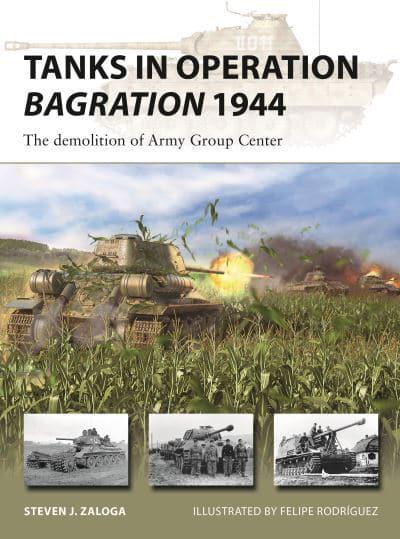Tanks In Operation Bagration 1944
Usually shipped within 24 hours
UK deliveries from £5.95
Delivery & Returns
Delivery & Returns
We use the Royal Mail, DHL Express or UPS for our customers. For UK addresses, deliveries under 10kg are a standard £4.95 via Royal Mail Tracked 48 Service. For orders over 10kg and overseas customers, postage is calculated for you at checkout once you have entered your postal address. This price, does not include any potential custom charges that may apply, depending on the product or destination, as every country has very different import duties / taxes. Online exclusive products (such as trainers) will be delivered to you directly from the printer, separate from other items in your order, but your postage fee covers ALL items in your order.
If you are unhappy with your purchase, please email shop@tankmuseum.org within fourteen (14) working days of receiving your goods, and return it to us at the address below, in its original condition, unopened (with any seals and shrink-wrap intact) and we will issue you a full refund or replace it. Goods must be returned at your own cost. If the item is faulty, you do not need to return it, we will send you a replacement free of charge.
Description
Description
By Steven J.Zaloga
Paperback
A new study of tank warfare used in the Soviet offensive of Operation Bagration, which destroyed Army Group Center. Operation Bagration, the 1944 summer campaign on the Russian Front, has been called "Hitler's Greatest Defeat." The operation involved substantial tank and armored vehicles on both sides but the German forces were severely hampered by the transfer of dozens of Panzer divisions to France to repel an expected Allied invasion. Forced to make hard decisions, German tank forces in the central Belarus sector were weak compared to the heavy concentration of Panzers in northern Ukraine.
The Red Army exploited this vulnerability, crushing Army Group Center, and pushing beyond the Soviet frontier into Poland and East Prussia. With this crucial victory secured, the Red Army conducted successive offensives beyond the Carpathian Mountains, arriving at the Vistula river in Poland, and forcing Romania to switch sides. The Red Army had embarked on a major tank modernization after the Kursk battles of 1943 and as a result, Operation Bagration saw the first widespread use of T-34-85 and IS-2 tanks as well as self-propelled guns.
Germany's Panther tank finally reached technical maturity in the summer of 1944 but small numbers weakened its battlefield impact, while other innovations such as the Tiger II heavy tank failed to leave their mark. Using new photos and a fascinating selection of color illustrations explaining the camouflage and markings of these tanks, this book describes how the tanks and AFVs on both sides contributed to the eventual defeat of Army Group Center.
![Tanks In Operation Bagration 1944 Book [variant_option4]](http://tankmuseumshop.org/cdn/shop/files/9781472853950.jpg?v=1748337989&width=1214)

![Tanks In Operation Bagration 1944 Book [variant_option4]](http://tankmuseumshop.org/cdn/shop/files/9781472853950.jpg?v=1748337989&width=88)
![Tank Museum Playing Cards Game [variant_option4]](http://tankmuseumshop.org/cdn/shop/files/ProductShoot_10_10_2025035.jpg?v=1760358498&width=176)
![Tank Museum Wrapping Paper - Two sheet pack Wrapping Paper [variant_option4]](http://tankmuseumshop.org/cdn/shop/products/Wrapp_Paper_All.jpg?v=1748337915&width=176)
![Tanks In Operation Bagration 1944 Book [variant_option4]](http://tankmuseumshop.org/cdn/shop/files/9781472853950.jpg?v=1748337989&width=640)



